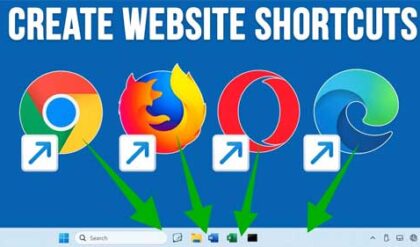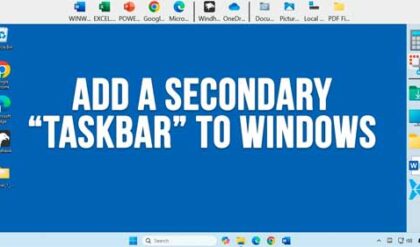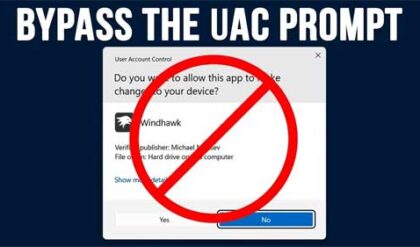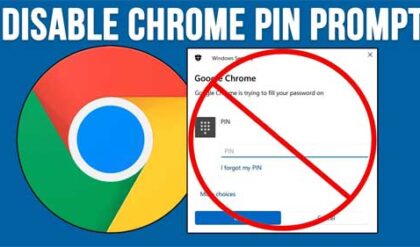We live in a digital era. An era where you can attend a conference with individuals sitting miles away, without actually having to travel to another country. An era where you can find out about everything you want to by just typing it out in a small rectangular search bar. An era where almost everything from clothes to food can be delivered to your doorstep.
Gone are the days when setting up a brick-and-mortar business was the only way to sell products or services. As we progress and embrace more technological innovations, we open doors for small-scale and large-scale businesses to make their way into the online world.
Today, the vastness and possibilities offered by the digital world are extraordinary. This vastness combined with the ease of admittance is what has made several brands transition into an online store.
Moreover, with the pandemic, the world saw inflation in the number of eCommerce stores in the last year. This was the result of consumer’s changing habits as the pandemic hit us. There was no other solution except getting on the web.
Among these, social media platforms, Instagram shops to be precise, have proven to be a terrific source of income for many. Natori, a designer lingerie and clothing brand, saw a 1,416% increase in Instagram traffic and consequently, a 100% increase in revenue.
“Instagram has played a major role in helping us build a brand, and we love how the new shopping features allow us to easily showcase our products in a way that feels authentic to the community we’ve built,” said Ken Natori, President for The Natori Company.
“In just a few short weeks of using the new shopping features on Instagram, we’ve seen a 100 percent increase in revenue from the channel and a massive 1,416% increase in Instagram referral traffic to our website.”
If you are planning to go social after your website is ready, an Instagram shop would perhaps be a perfect place to start from. Here’s what an Instagram shop is and how you can set it up.
About Instagram Shop
Think of your Instagram shop as a platform to showcase your digital catalog. You can use this platform to not only promote your products but also sell them (if eligible. Instagram is still rolling out the Checkout feature).
You can convert your followers into your consumers if it’s done right. Use features like feed posts, reels, stories, and hashtags to expand your reach without having to spend a lot.
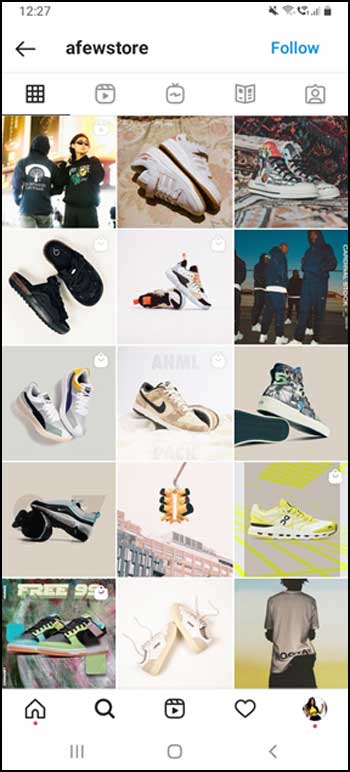
Take this German online sneakers store, for instance. This brand is making the perfect use of the platform by marketing and selling its products all at a one-stop – Instagram shop. Just like you tag a friend on your posts, you can tag your products and link them to your catalog. The catalog is further connected to your website, taking your social media followers exactly where you want them to go.
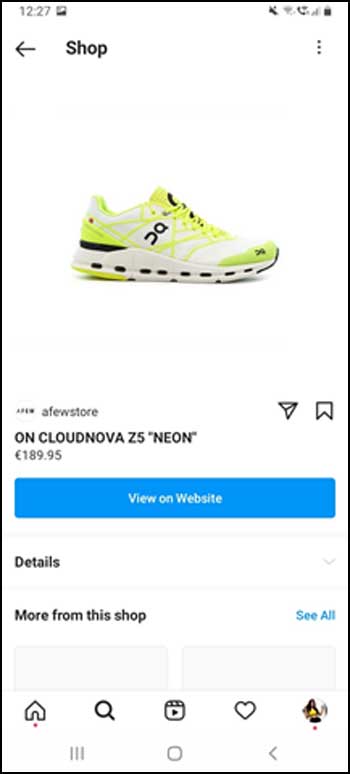
Setting Up Your Instagram Shop
Instagram is actually owned by Facebook. Before you can move further on Instagram, you need a business profile and a Facebook page to link to that profile. Your content will get transferred from your Facebook page/shop to your Instagram shop as well. Keep in mind that it may take a little while to get approval for an Instagram shop but it’s all worth it.
After you have the Facebook page. The best way is to create a Facebook shop by syncing your eCommerce website with the page. When you sync your website to your Facebook page, you won’t have to create product listings or manage inventory manually. It can all be automated, making your work a lot easier for you. You can use the same dashboard that you are using for your website to monitor your Facebook shop.
So, to begin with, you need:
- An eCommerce website (preferably a Shopify Store)
- A Facebook Shop
- An Instagram Business Profile
Now, let’s understand how we can set up our Instagram store.
Step 1: Eligibility and Optimization
First thing’s first. Like every other platform, you need to make sure that you are eligible for an Instagram shop.
You must understand that this feature is only eligible for physical products and not services. So, suppose you are a digital agency, trying to generate inbound leads on Instagram. You cannot use this feature to sell your marketing services, however, if your customers are from product-based industries like skin-care or fashion accessories, selling Instagram shop as a service would be an amazing deal.
data
One of the major issues with the Instagram shop is that it is not available in all the countries as of now. So, you’ll have to make sure that you have access to this feature before you plan ahead. Also, make it a point to ensure your products comply with the commerce policies established by Instagram. Otherwise, the platform can penalize or ban your account indefinitely.
Next, keep your app updated. You should have the latest version installed to use this shop feature. You’ll be able to see tiny shopping bag icons at the right corner of the posts where you tag your products. If you don’t, it means you are not using an updated application.
Also, convert your profile to a business account. Just go to Settings, Account, and select ‘Switch to Business Profile’. When you do this, you should have access to a lot of other business tools including analytics (insights), promotions, action buttons, ads, and more.
Now that you have your profile optimized for business, let’s start by adding products to the page.
Step 2: Sync Product Catalogue to Facebook Shop
Remember that we discussed that your Instagram Shop automatically gets updated when you update your Facebook shop?
Link your account to the Facebook page by going to Settings and ‘Linked Accounts’. Make sure that your Facebook shop is already updated with all the necessary products that you want to showcase on your page. With this, you can not only promote your products on Instagram but Facebook as well. This helps save time and effort that you would’ve had to otherwise put in promoting your products across different platforms. If you don’t have a Shopify store, you first need to create that before you can start syncing. Once you have your website ready, connect it to the Facebook shop, and update your catalog.
Get all your accounts linked and ready to launch.
Step 3: Sales Channel
Next comes getting Instagram’s and Facebook’s sales channels ready. This will make it easier for you to monitor your sales taking place with the help of these platforms.
All you need to do is go to your online store’s dashboard and click on ‘Add Sales Channel’. From there, just select Facebook and Instagram by selecting the cross/plus button next to them.
Step 4: The Waiting Period
At this time, you should be at a stage where you have done the following:
- You have your Instagram business profile ready. /li>
- Your Instagram business account is linked to your Facebook business page.
- You have created a Shopify website and linked it to your Facebook page.
- You have your product catalog synced to your Facebook shop.
- You have your Shopify sales channel linked to your Facebook and Instagram shop.
Now, all you have to do is wait. Sometimes, Instagram can take a little longer to review and approve your store. But be patient and sit tight. You will be notified when your account will get approved. You can get the ball rolling from there.
Step 5: Start Tagging
Congratulations! You have your Instagram profile all up and running.
Now comes the fun part. You can easily tag your products in your posts like you tag friends in your personal profile. After reaching the stage where you are just one step behind sharing your post, you will come across a ‘Tag Products’ button.
Use this to add names and prices to your products. Once you do that, you will see a tiny shopping bag sign on your post. When you click on the post and tap, you will also see shopping labels/tags appearing on the product with its name and price.
This makes it easier for users to know the price and make instant decisions about the purchase. Instagram offers a carousel post. This post is basically used when you want to showcase multiple products in one post. On average, if you add a static image, you can tag up to 5 products. However, this multiple-image post lets you tag around 20 products.
Also, when you update even one Instagram shop post, you will notice an additional action button named ‘Shop’ at the top of your profile. This makes it easier for your audience to understand that you are even selling your products on the platform and not just promoting them.
Now that you have taken your shop live, it’s time to make your target audience aware of the launch. This is how you can promote your Instagram shop.
Promoting Your Instagram Shop
Before we begin, you must understand that there is no one size fits all solution. Every brand has different marketing techniques working for them. Use the below-mentioned methods to find out what works best for you and circle your strategy around that.
Use relevant hashtags
Hashtags are your not-so-secret method to gain visibility. Hashtags have been an important instrument for Instagram marketing ever since the platform was introduced. These hashtags allow your profile to become more discoverable for those who are searching for someone like you. Thus, it’s crucial for you to focus on the accuracy and relevance of the tags you’re adding.
Hashtags can also help in pushing your content on the search and explore page. The best thing about this page is that now it has its own ‘shop’ section. This section recommends personalized products to the users based on their interests and accounts they follow. If you have the right hashtags in place, your audience will stumble across your profile way before your competitor’s.
Your hashtags should be product-based, industry-based, niche-based, and event/holiday-based. Add anything between 11 to 30 hashtags in your caption or your comment section to expand your reach organically.
Leverage paid advertisements
While a lot can happen with organic social media marketing, you still need paid advertisements to give your organic efforts a boost.
The best thing about Instagram Ads is that you can run an ad on your post itself. This will take your target audience to the description page of the product. From there, the audience can either choose to explore more products or go to the mobile shop. Your ads should have high-quality images. The quality of pictures can entice or repel your customers.
Since you will be reaching a much larger audience with your paid marketing efforts, you should make sure you’re only promoting your best content via Instagram ads.
Use product sticker feature
Instagram story is the most interactive and engaging part of the platform. To add to this, we now have a product sticker feature that allows you to tag your products in your story. An upgrade that’s too mind-blowing to miss out on.
You get to choose between different styles. You can choose to add a shopping bag icon, product name in grey/rainbow colors, or maybe just translucent text. Change the colors of these stickers and the text according to your brand colors to make the entire creative look more appealing. Your followers can simply head to your profile from your story using that small icon.
Marketing outside of Instagram
If you want to expand your marketing efforts, you can step outside of your Instagram. Start by optimizing your website for the search engine. Adding keywords to your website, interlinking your web pages, and adding good and relevant content will help you rank better on the search engine results.
Videos have also proven to be a great technique to rank above your competitors. You can create exciting videos that circle your product and share them with your audience via YouTube. You can use YouTube video ranking tools to analyze how fruitful your efforts are.
Twitter is another great place to share bite-sized content and to promote your product. However, not every social media page is created for your brand. You need to identify and understand which of these platforms work well for you and then opt for the best ones out of the lot.
Conclusion
To conclude, we can say that the way business operates has been transformed completely. From setting up a brick-and-mortar shop and using newspapers and magazines to now digitally setting up a shop, we certainly have made things more cost-effective and easier for ourselves.
You can showcase your product catalog, promote your product, and even generate sales by sitting in the comfort of your home. The customer’s purchase habits certainly play a major role in making eCommerce as successful as it is today.

